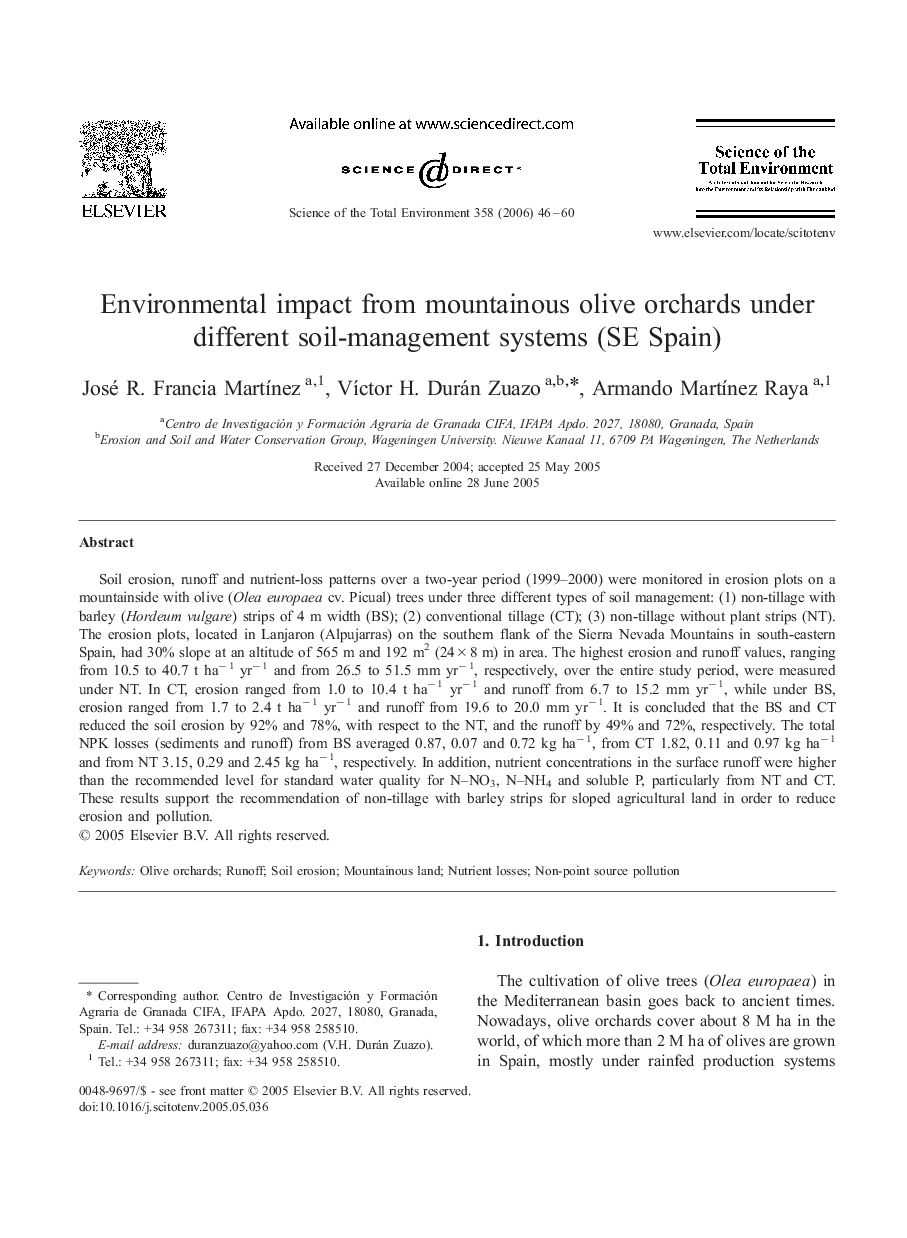| Article ID | Journal | Published Year | Pages | File Type |
|---|---|---|---|---|
| 4434404 | Science of The Total Environment | 2006 | 15 Pages |
Soil erosion, runoff and nutrient-loss patterns over a two-year period (1999–2000) were monitored in erosion plots on a mountainside with olive (Olea europaea cv. Picual) trees under three different types of soil management: (1) non-tillage with barley (Hordeum vulgare) strips of 4 m width (BS); (2) conventional tillage (CT); (3) non-tillage without plant strips (NT). The erosion plots, located in Lanjaron (Alpujarras) on the southern flank of the Sierra Nevada Mountains in south-eastern Spain, had 30% slope at an altitude of 565 m and 192 m2 (24 × 8 m) in area. The highest erosion and runoff values, ranging from 10.5 to 40.7 t ha− 1 yr− 1 and from 26.5 to 51.5 mm yr− 1, respectively, over the entire study period, were measured under NT. In CT, erosion ranged from 1.0 to 10.4 t ha− 1 yr− 1 and runoff from 6.7 to 15.2 mm yr− 1, while under BS, erosion ranged from 1.7 to 2.4 t ha− 1 yr− 1 and runoff from 19.6 to 20.0 mm yr− 1. It is concluded that the BS and CT reduced the soil erosion by 92% and 78%, with respect to the NT, and the runoff by 49% and 72%, respectively. The total NPK losses (sediments and runoff) from BS averaged 0.87, 0.07 and 0.72 kg ha− 1, from CT 1.82, 0.11 and 0.97 kg ha− 1 and from NT 3.15, 0.29 and 2.45 kg ha− 1, respectively. In addition, nutrient concentrations in the surface runoff were higher than the recommended level for standard water quality for N–NO3, N–NH4 and soluble P, particularly from NT and CT. These results support the recommendation of non-tillage with barley strips for sloped agricultural land in order to reduce erosion and pollution.
